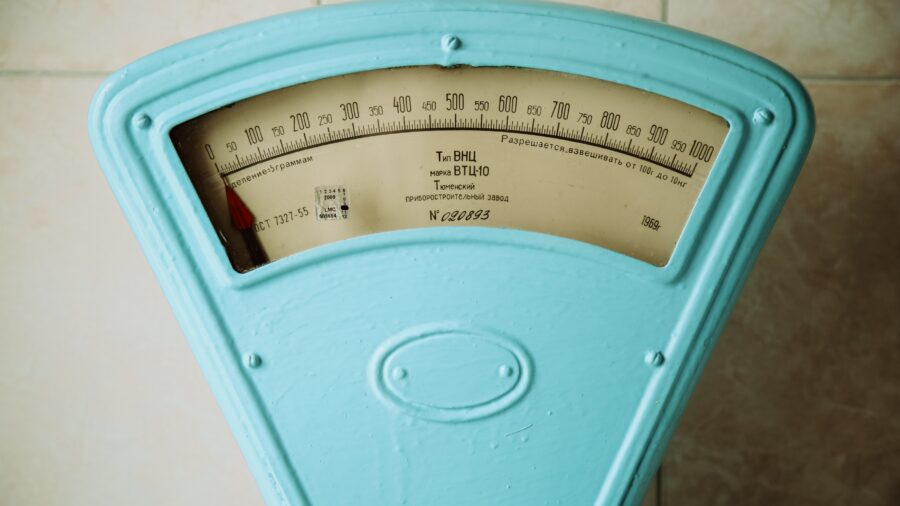There’s no doubt cars in Australia are getting bigger and heavier. One reason is there are more safety features but mostly, it’s our preferences for larger SUVs and utes. Even most electric vehicles (EVs) weigh a third more than fuelled versions because of their batteries. Yet what does all this extra weight mean for road safety?
What do we mean by weight?
First, there are several ways to measure the weight of a vehicle. These are the main ones we talk about:
- Tare weight or mass – unladen weight (no occupants, luggage or cargo) with only 10 litres of fuel
- Kerb weight or mass – unladen weight with a full tank of fuel
- Gross vehicle mass (GVM) – maximum weight, that is, kerb weight plus all accessories fitted plus any payload (maximum load).
When you register your vehicle in NSW, you pay vehicle tax based on tare weight. However, light vehicles are classified as a GVM of 4.5 tonnes or less. A sample of over a dozen vehicles suggests carmakers state the kerb weight in their specifications of makes and models.
Australians prefer larger vehicles
For the first time in March 2023, there were no passenger cars in the top 10 of new vehicle sales. Instead, there were 3 utes and 7 SUVs.
In the top 25, only 4 vehicles were neither SUV nor ute – Tesla Model 3, Hyundai i30, MG 3 and Toyota Corolla. Only 5 years ago, there were 3 passenger cars in the top 10 – Toyota Corolla, Mazda 3 and Hyundai i30.
We looked at the average GVM* of the top 10 sellers, compared to 5 popular passenger cars. Federal Chamber of Automotive Industries attributes the popularity of larger vehicles to their flexibility to “do the grocery run, carry the tools and tow the boat on the weekend”. So we chose the GVM, assuming these vehicles are carrying a load.
The heaviest vehicles in the 2 lists are utes – the top 3 sellers.
Top 10 sellers
- Toyota HiLux 3,050 kg
- Ford Ranger 3,200 kg
- Isuzu D-Max 3,100 kg
- Mitsubishi Outlander 2,245 kg
- Tesla Model Y 2,500 kg
- Mazda CX-5 2,140 kg
- Subaru Forester 2,223 kg
- MG ZS 2,060 kg
- Toyota RAV4 2,230 kg
- Isuzu MU-X 2,800 kg
Five popular cars
- MG 3 1,685 kg
- Toyota Corolla 1,820 kg
- Hyundai i30 1,850 kg
- Mazda 3 1,875 kg
- Tesla Model 3 2,060 kg
*Most GVMs stated here are averages of several models and for general use only.
Heavy vehicles cause more road trauma
There is plenty of evidence to show heavy vehicles can cause more road trauma.
US researchers found adding 454 kgs (just under half a tonne) to the weight of a vehicle increases by 40-50% the chances of killing someone in another vehicle. They said a heavier vehicle is generally safer for its own occupants but more hazardous for people in other vehicles.
At Monash University Accident Research Centre, researchers have found driving a large, rather than a medium, SUV increases the risk of causing serious injuries to others by a third. The Centre also found larger cars are overrepresented in “back over” crashes, where the car reverses into a pedestrian. In Australia, pedestrian road deaths increased by 22.6% in the year to 31 March 2023. There has been no official comment on why this might be, but the weight of vehicles may well be a factor.
International research found SUVs, compared to cars, are disproportionately likely to injure and kill pedestrians at crashes of intermediate speed, compared to low or high speed. This is mainly because of impact against the bumper, grille or headlights.
Finally, electric vehicles (EVs) are about a third heavier than their fuelled versions. Their batteries weigh about half a tonne, the weight noted above, which increases the chances of killing someone.
Electric vehicles are heavy and getting heavier
When the IIHS (US) first safety tested EVs in 2011, they were focusing on the risk of fire. However, testers became concerned about the extra weight of EVs compared to fuelled vehicles, and the safety of passengers in lighter vehicles.
In 2011, the Nissan Leaf weighed 1,515 kgs but today, many EVs weigh over 2,700 kgs. For example, the popular Ford F-150 Lightning EV pickup (US) weighs 900-1,360 kgs more than the fuelled models.
If a heavier vehicle pushes a lighter one backwards, there are higher forces on the people in the lighter vehicle than in the heavier vehicle. Another potential problem is braking performance. EVs can accelerate quickly but it’s not yet clear how quickly they are able to stop. Longer stopping distances can endanger pedestrians and cyclists as well as occupants.
On another note, it was recently reported that the extra weight of EVs (or other heavy cars for that matter) may be damaging the structure of many multistorey carparks. This is because they were built when most vehicles were considerably lighter than they are today.
It costs more to register a heavier vehicle
In general, it costs more to register and buy insurance for a heavier vehicle.
While the registration fee in NSW is $70 for all vehicles, the vehicle tax portion is based on tare (unladen) weight.
For example, the driver of a relatively light passenger car pays $330 in vehicle tax, compared to $913 for a popular ute.
As for CTP insurance, it tends to cost more to buy a green slip for a light goods vehicle than for a passenger car. Your registration papers show insurers the tare weight. In fact, the greenslips.com.au Calculator needs only the vehicle variant, rather than the weight of your vehicle.


your opinion matters: